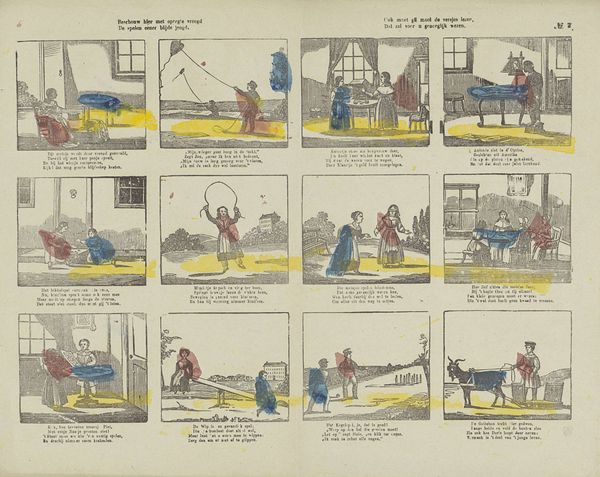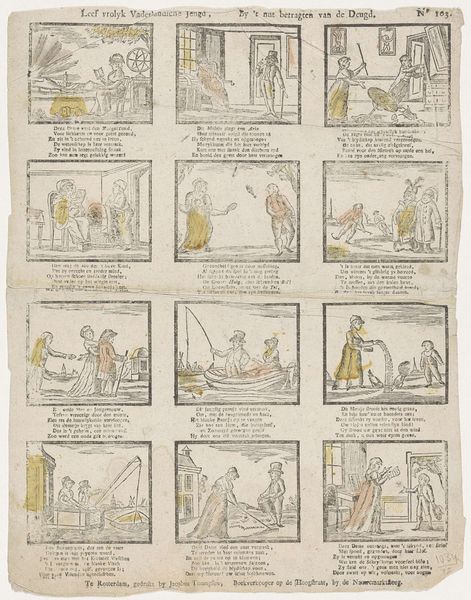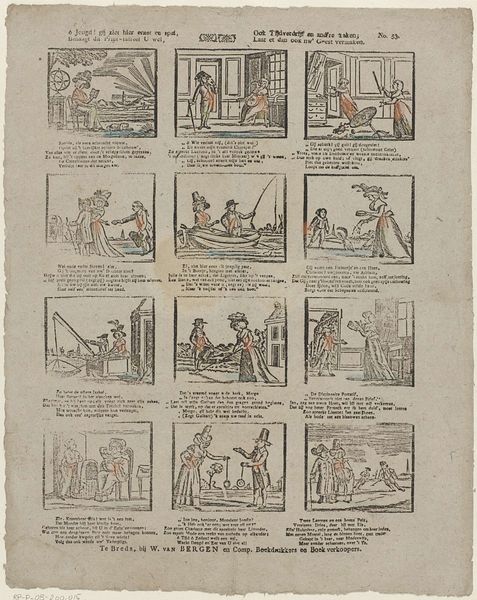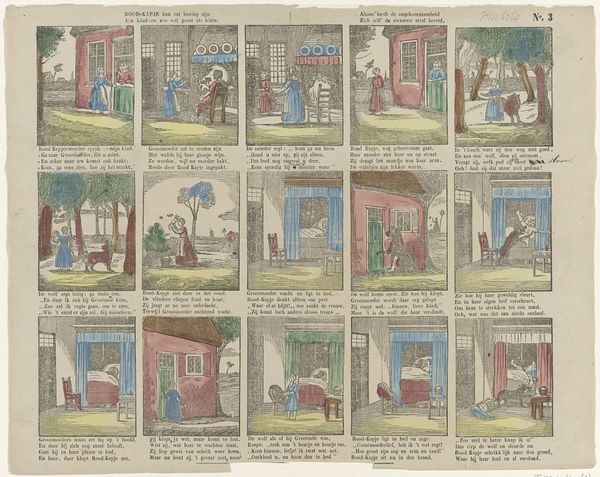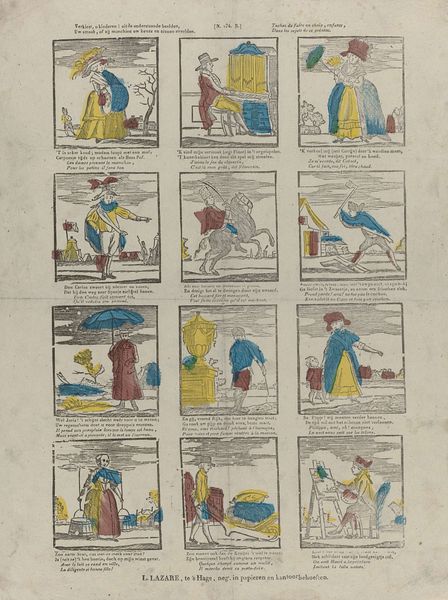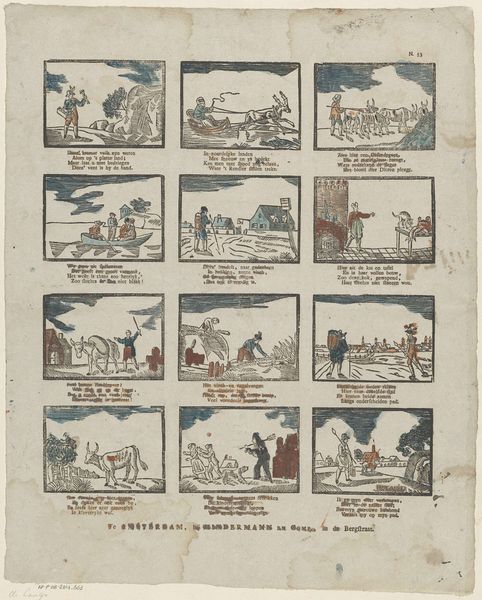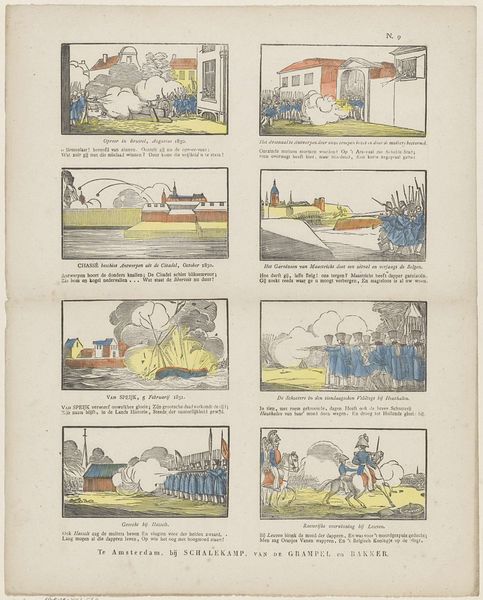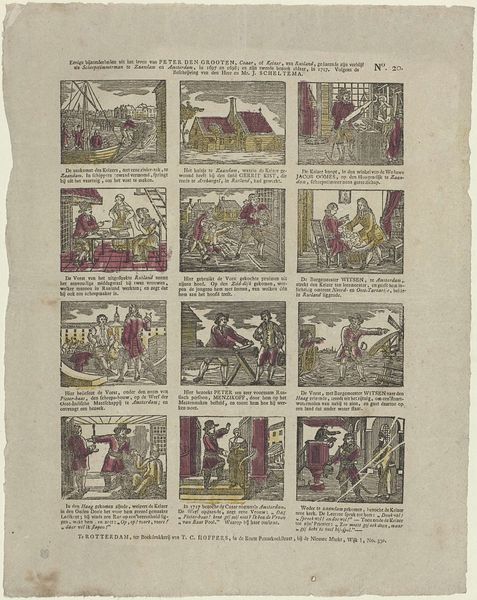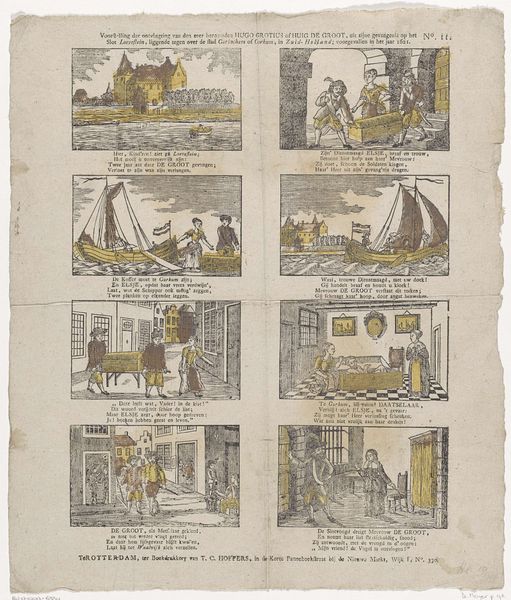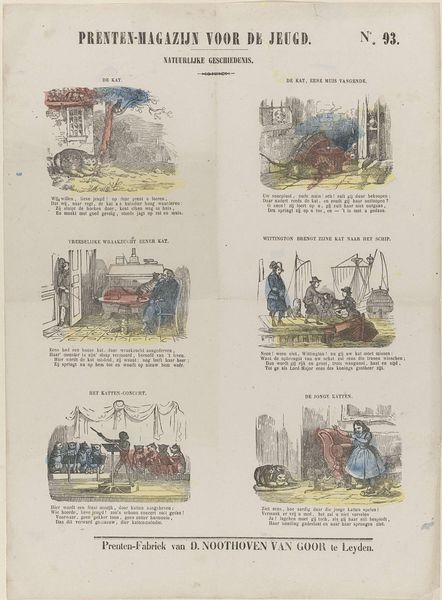
Hier wordt u eene schets gegeven, / Van 's landsman nuttig, vrolijk leven. / Hebt achting, kind'ren, voor dien stand, / Hij strekt tot heil voor 't vaderland! 1850 - 1870
0:00
0:00
#
comic strip sketch
#
narrative-art
# print
#
folk-art
#
genre-painting
Dimensions: height 296 mm, width 375 mm
Copyright: Rijks Museum: Open Domain
This charming print, dating from the nineteenth century, was made by Willem Bal using etching, a printmaking technique that allows for fine, linear detail. The print depicts twelve scenes of Dutch rural life, celebrating the virtues of farm labor. The imagery is deliberately simple, even crude. By focusing on the honest work of farmers, Bal elevates the common person, while implicitly contrasting them with the perceived decadence of urban life. Etching as a medium is well-suited to this message. Compared to painting or sculpture, it is a relatively democratic art form, capable of producing multiple images quickly and cheaply. This print would have been widely circulated, reinforcing the values of hard work and national pride amongst a broad audience. In its own way, it's a fascinating example of how the means of production can shape the meaning of an artwork.
Comments
No comments
Be the first to comment and join the conversation on the ultimate creative platform.
